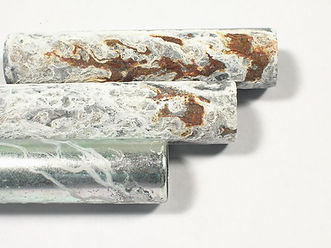
Automotive Interior Testing
Material Properties: Tensile, Compression, and Flexural Properties

Tensile, compression, and flexural testing are essential for the validation, safety, and quality control of automotive interior materials and components. These tests are performed using a universal testing machine (UTM). This machine can apply controlled force to materials and components to determine their strength, ductility, and elasticity, helping manufacturers understand how materials perform under different conditions.
Tension testing, or tensile testing, involves pulling a material until it breaks to measure its strength and elongation under stress. Compression testing, on the other hand, applies force to compress the material, providing information on its ability to withstand crushing forces. Flexural testing, or bending testing, applies force to the center of a material supported on either side, measuring how it bends and resists breaking. Together, these tests provide a comprehensive assessment of material performance.
For automotive interiors components, tensile testing is used to assess things such as seatbelt fabrics, ensuring they have the strength to endure sudden stress during collisions. Seating leather and upholstery materials are also commonly tested, as are the stitches seams of these materials. Compression testing is critical for evaluating foam materials in seats and headrests to ensure they can provide adequate cushioning while resisting deformation over time. Flexural testing is used for components like dashboard panels and plastic trims to assess their durability and resistance to cracking when subjected to bending forces. Each of these tests helps automotive manufacturers ensure that interior materials are durable, safe, and comfortable, meeting regulatory standards and enhancing the vehicle’s longevity and passenger safety.
Common Test Methods and Standards
ASTM D638 Standard Test Method for Tensile Properties of Plastics ASTM B533 Standard Test Method for Peel Strength of Metal Electroplated Plastics
ASTM D1002 Standard Test Method for Apparent Shear Strength of Single-Lap-Joint Adhesively Bonded Metal Specimens by Tension Loading
ASTM D903 Standard Test Method for Peel or Stripping Strength of Adhesive Bonds
ASTM D882 Standard Test Method for Tensile Properties of Thin Plastic Sheeting
ASTM D790 Standard Test Methods for Flexural Properties of Unreinforced and Reinforced Plastics and Electrical Insulating Materials
GMW16443 Adhesion Performance Requirements for Adhesive Backed Light Trim and Foam
GMW 3010 Determination of Tensile and Elongation Properties
GMW 3326 Tearing Strength of Textile Materials by Trapezoid Method ISO 527 Plastics – Determination of Tensile Properties
FCA/Stellantis LP.7M002 Soft Trim Materials – Dimensional Stability Test
FCA/Stellantis LP.7M008 Bond Strength of Trim Materials
FCA/Stellantis LP.12128 Pluck Testing – Double Coat Adhesive System – Nameplate Tape
FCA/Stellantis LP.12155 Torque Testing Double Coated Adhesive Nameplate Tapes SAE J949 Test Method for Determining Stiffness of Interior Trim Materials and Substrates by a Three-Point Bending Test
VDA 230-209 Leather and Plastic Roll Stock and Textiles for Motor Vehicles - Determination of Flexural Properties
Volvo STD 423-0005 Plastics – Determination of Izod Impact Strength
Why is testing necessary for automotive interior components?
Types of Materials Commonly Tested
Seating •Leather (natural and synthetic) •Fabric upholstery •Foam padding •Seat frames and mechanisms •Stitching and thread •Heated/ventilated seal components Dashboard •Plastics (ABS, PVC, polyurethane) •Soft-touch coatings •Plated plastic trim •Displays •Vents and HVAC controls •Adhesive layers and bonding materials Instrument Panel •Cluster displays •Buttons, knobs, and switches •Touchscreen surfaces •Backlighting components •Haptic feedback mechanisms Center Console and Door Panels •Plastic trim and bezels •Leather or synthetic coverings •Cup holders, storage compartments •Electronic components (USB ports, chargers) •Armrest materials and padding Wood, metal, or carbon fiber accents •Window switchgear and buttons •Interior door handles and lock mechanisms Steering Wheel •Leather wrapping or synthetic materials •Metal and plastic structural elements •Control buttons •Heated steering components •Airbag cover materials Flooring and Mats •Carpet fibers •All-weather rubber mats •Sound-dampening materials •Floor insulation layers Roof Liner •Fabric liners •Sunroof or panoramic roof trim •Insulation and soundproofing materials Interior Lighting •LEDs and backlighting modules •Ambient lighting strips •Dome and reading lights

